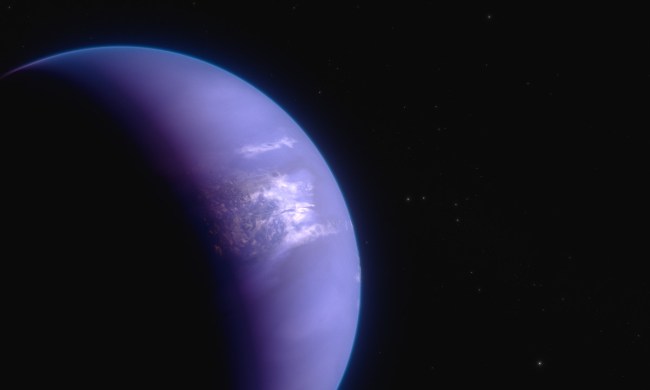In the last decade, we’ve become remarkably good at identifying exoplanets, or planets outside our solar system. In fact, we recently passed an impressive milestone of over 5,000 confirmed exoplanets discovered. However, most of these detections tell us little about the planets we’ve identified — typically only their distance from their host star, and their mass or size.
The next big step in exoplanet research is learning more about these planets, and in particular what their atmospheres are like. This is one of the major aims of the James Webb Space Telescope when it’s ready for science this summer, but in the meantime, researchers are getting creative to answer these questions. Recently, astronomers using data from the Hubble Space Telescope have investigated 25 exoplanets to find out about their atmospheres.

“Hubble enabled the in-depth characterization of 25 exoplanets, and the amount of information we learned about their chemistry and formation — thanks to a decade of intense observing campaigns — is incredible,” said lead author of the study, Quentin Changeat, in a statement.
The 25 planets investigated were a type called hot Jupiters, meaning they are roughly the size of Jupiter and they orbit very close to their host stars. The team looked for hydrogen ions and metal oxides in the planets’ atmospheres, which can help them learn about how the planets formed as well as learn about their atmospheric chemistry. They combed through huge volumes of data including 600 hours of Hubble observations and 400 hours of observations from the now-retired Spitzer Space Telescope, looking at eclipses (when the exoplanet passes behind its star) and transits (when the exoplanet passes in front of its star).
This meant they could learn about correlations between atmospheric composition and other qualities, such as whether they showed thermal inversion — where an atmosphere gets hotter at higher altitudes. Thermal inversion was observed in the hottest exoplanets, with temperatures over 2,000 kelvin. The researchers also noted that there were hydrogen ions, titanium oxide, vanadium oxide, or iron hydride in almost all these hot atmospheres.
One of the notable things about this research is that it shows how large amounts of data can be used to look for large-scale trends in exoplanets. And that’s useful for predicting what other exoplanets might be like.
Researching these issues might even help us understand our own solar system, according to Changeat: “Many issues such as the origins of the water on Earth, the formation of the Moon, and the different evolutionary histories of Earth and Mars, are still unsolved despite our ability to obtain in-situ measurements. Large exoplanet population studies, such as the one we present here, aim at understanding those general processes.”



